
Krasnoflotsky Bridge is one of the bridges in the central part of St. Petersburg.
Krasnoflotsky Bridge is located in the city center and spans the Moika River in the alignment of the Kryukov Canal embankment. The bridge connects the Kazan and the 2nd Admiralty islands.
The name "Krasnoflotsky" bridge has been received since the 1960s, according to the barracks of the Naval crew (Kryukovsky barracks) located nearby, on the Kryukov Canal embankment.
The bridge is completely pedestrian. It has a total length of 37.2 meters, and a width of only 2.24 meters.
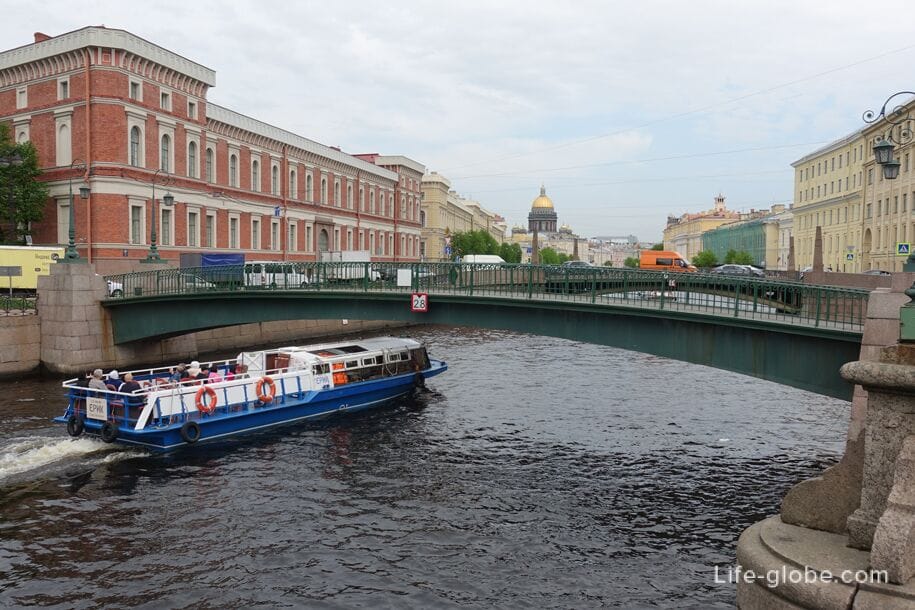
Krasnoflotsky Bridge is a single-span structure of a beam-split system.
The superstructure is reinforced concrete, reinforced with a metal border, made of two beams with a curved outline of the lower belt. The beams are connected by cross-links, the lower of which serve as a support for the pipeline. From above, the superstructure is covered with precast reinforced concrete slabs. The facades are lined with metal sheets.
The abutments of the bridge are reinforced concrete on a pile base, extended into the channel bed and lined with granite. The railings are metal of a simple pattern, on the abutments there are granite curbstones.
Artistic metal floor lamps with lanterns, stylized as Art Nouveau, are installed at the entrances of the bridge.

At the entrance to the bridge there are descents with granite steps.
The pavement on the bridge itself is asphalt.
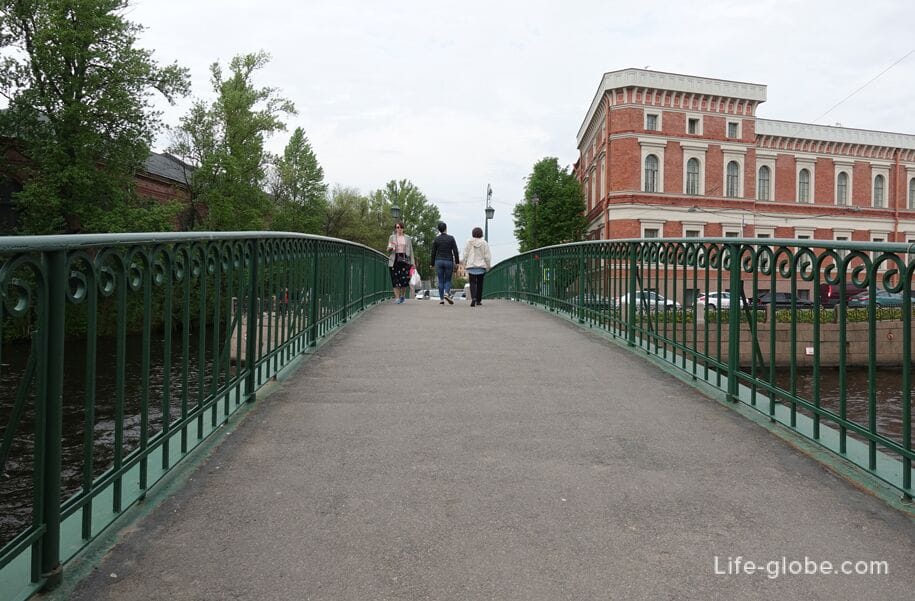
Next to the bridge is the Central Naval Museum named after Emperor Peter the Great, located in the building of the former Kryukov barracks and is one of the oldest museums in Russia and one of the largest maritime museums in the world, with one of the richest collections of ship models. The pride of the museum is the original boat of Peter I, originally stored in Bot House Peter and Paul Fortress.
Museum website: navalmuseum.
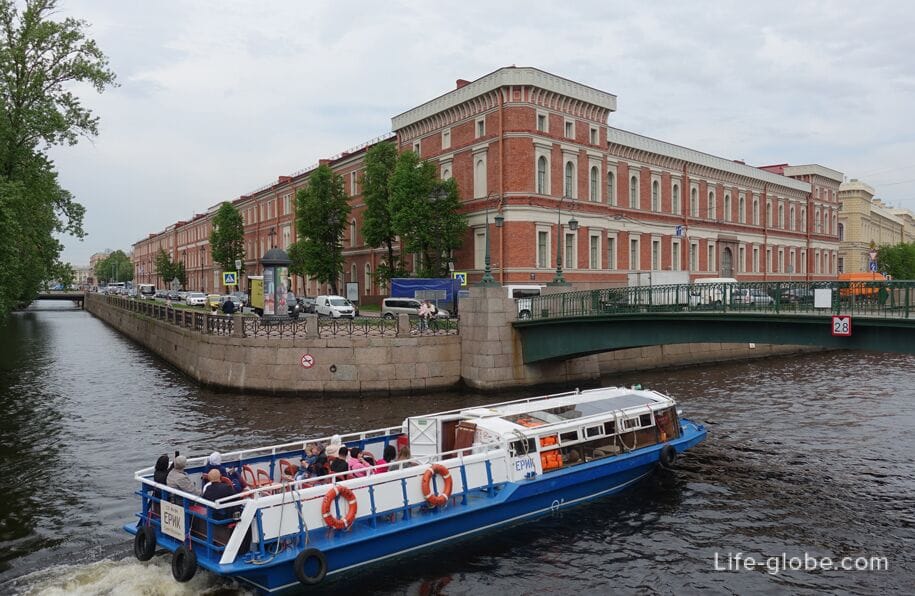
Near the Krasnoflotsky bridge there are: The kissing Bridge, which has gained popularity and has become legendary due to its name and Matveev Bridge, spanning the Kryukov Canal in the alignment of the Moika River.
Photo of the Kissing bridge
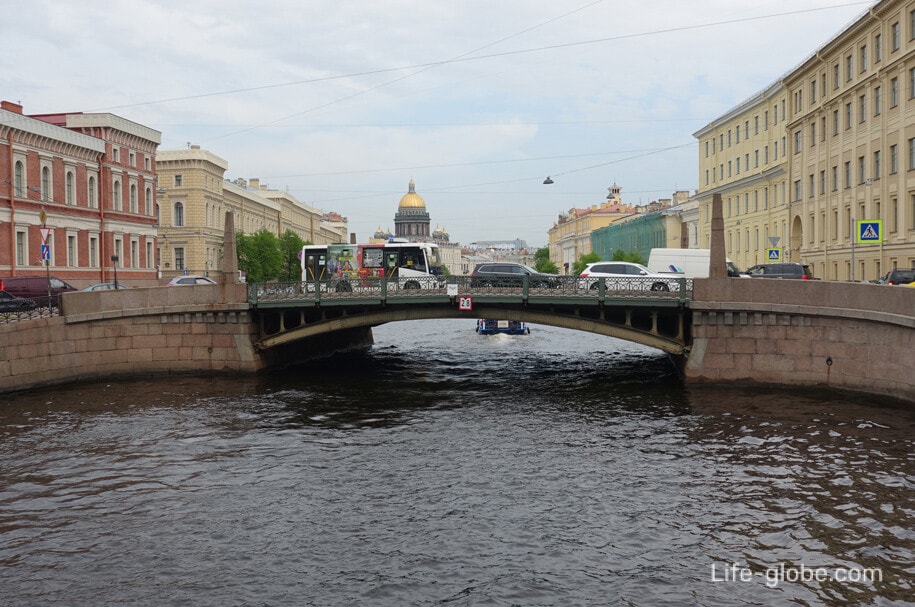
Photo of the Matveev Bridge
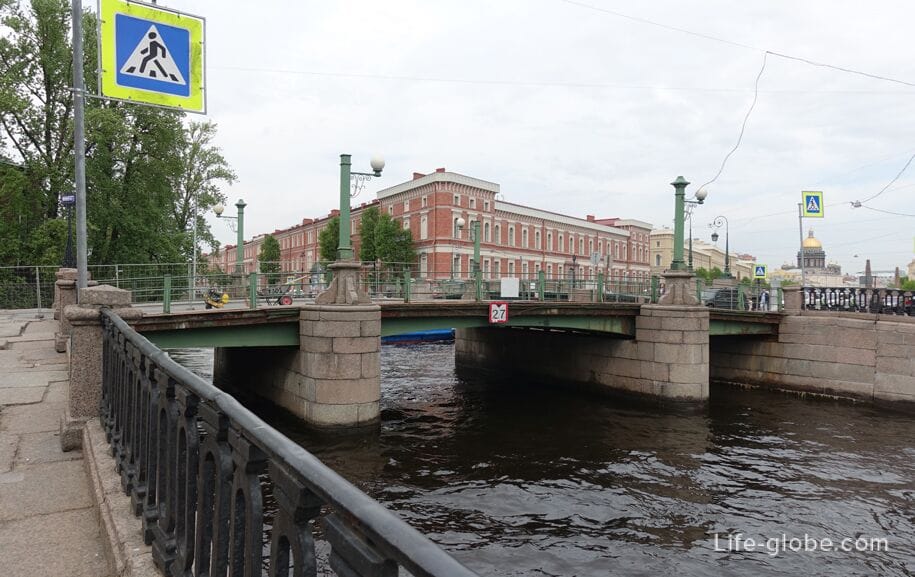
The first metal bridge with a wooden deck of the roadway at this place was built in 1876 specifically for laying a horse-drawn railway (horse-drawn tram) line. Then, contrary to the real purpose of the bridge - the bridge is completely pedestrian, pedestrian traffic on the bridge was prohibited; pedestrians and crews used the neighboring Kiss Bridge.
Initially, the bridge did not have a name, and in the reference books of the early 20th century, the names Pontoon and Staro-Konochny are mentioned.
In the 1910s, after laying the tram line on the Kiss Bridge, the bridge lost its transport significance and was dismantled in the 1930s.
In the 1950s, when it became necessary to lay a heat pipeline through a watercourse, a project for the construction of a heat pipeline bridge was drawn up by order of the Lenenergo heating network, the authors of which were engineer A. A. Kulikov and architect L. A. Noskov. In 1960, a single-span pedestrian reinforced concrete bridge was opened, which was called Krasnoflotsky.
Subsequently, the bridge was subjected to repair work.
Coordinates of Krasnoflotsky bridge: 59°55'40.0" N 30°17'38.0" E (59.927778, 30.293889).
Nearest metro stations: "Sennaya Ploshchad", "Sadovaya", "Spasskaya" and "Admiralteiskaya".
All accommodation facilities in St. Petersburg, including in the city center and more remotely from it, can be viewed and booked here